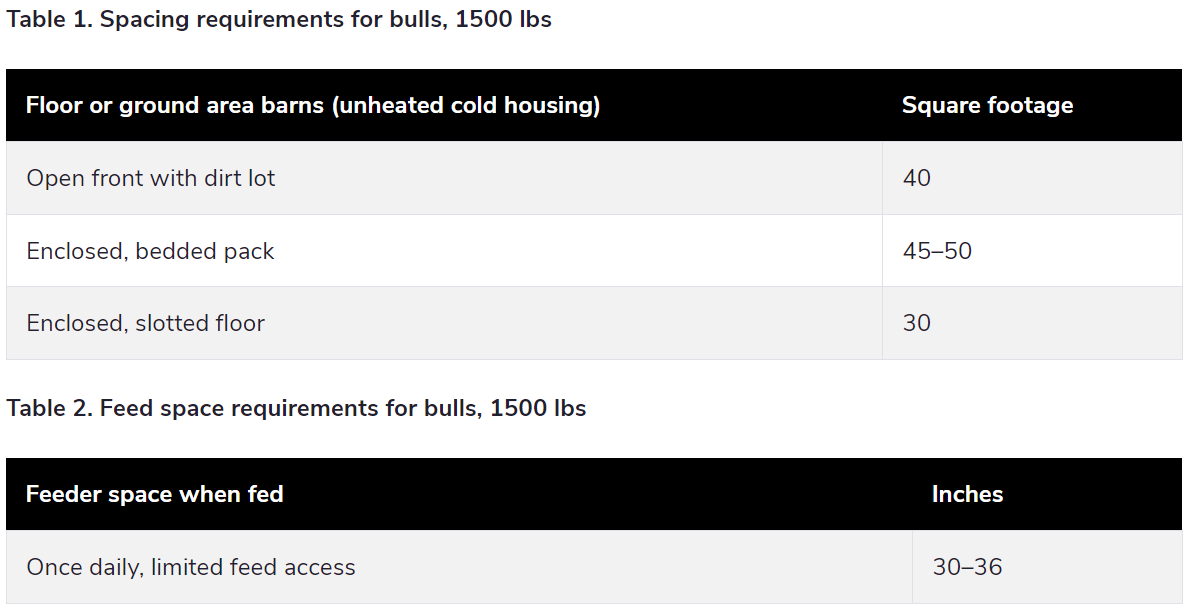



How to maintain beef bulls after breeding season
Maintaining bulls during the off-season is critical to his production successThe herd bull's job is seasonal, but the producer must ensure that the bull is well-maintained during his off-season to meet production goals to the best of his ability.
In a cow-calf operation, we often focus on just that: cows, heifers, and calves. But if you are housing a herd bull, proper off-season maintenance of your bull(s) is vital. Like cows, bulls' body weight and body condition scores (BCS) fluctuate throughout the year, with bulls losing considerable weight and condition during the breeding season. This means your off-season maintenance is crucial to prepare for the next season, especially if you own a bull under two years of age.
It is not uncommon to see a bull drop one or two body condition scores (1–9 scale) during a breeding season. So, when you separate the bull from the cows, evaluate his body condition and make appropriate nutrition adjustments. Unlike a feedlot steer, a herd bull should gain weight at a moderate rate. Nutrition will depend not only on the body condition but also on the animal's age. For a younger bull (under the age of 2), his diet should support both growth and maintenance. Young bulls can lose between 50 and 200 pounds in a breeding season. Therefore, the protein and energy levels in the diet must support both growth and reproductive health. Work with a nutritionist to assess if the diet meets the animals' needs.
Producers with more than one bull should ensure that the bulls have appropriate spacing in holding pens and at the bunk due to hierarchy and the animal's nature. Mixing older animals, especially bulls, will result in more fighting than younger cattle. Fighting and mounting are the most common problems with grouping, creating an unsafe environment for the animals and the producer, and potentially destroying facilities such as fencing. Remember, fighting and mounting utilize the animals' energy and will affect their feed requirements too. Attempts should be made to keep bulls in stable social settings and minimize mixing to keep safety a priority. Proper spacing for the animals' housing and bunk will also help limit the negative behavior.
Separating bulls by age and diet requirements will optimize growth and maintenance by allowing bulls access to the diets that will best suit them. Recommended spacing requirements can be found in the table below.

After separating the bull from the cows and evaluating the bull's BCS, producers should also contact a veterinarian to perform a health evaluation. Ideally, producers observe the bull throughout the breeding season for any lameness, pink eye, or injuries. An overall health evaluation will assist in detecting any problems before they become larger problems by the next Breeding Soundness Exam (BSE) in the spring. Depending on the operation's vaccination schedule, it may also be an excellent opportunity to vaccinate and treat parasites at this time.
Breeding soundness exams should be performed pre-breeding to ensure that bulls enter the breeding season in good physical health. For example, a bull may have successfully bred cows for four years with great results. However, after the fifth breeding season, several more cows remain open than expected. This should lead to a producer asking questions. A BSE performed after the breeding season should identify any issues that result in the bull being removed from the breeding program. If a BSE had been performed in the spring pre-breeding, the issue likely would have been identified, and the issue with open cows would have been prevented. Open cows can be very costly!
Additionally, focusing on an older bull at this time would provide feedback on bull performance within the herd. By evaluating the older bull's performance in last year's calf crop, a producer can determine a bull's overall value to production. Producers can ask themselves: Did the bull have a reasonable pregnancy rate? Did the bull's calves perform as well as expected? Should this bull's daughters be kept as replacements? Did this bull's calves have any calving issues?
The herd bull's job is seasonal, but to fulfill his job to the best of his ability, the producer must ensure that the bull is well-maintained during his off-season. Breeding and nutrition are the driving forces of a cow-calf operation. Avoid overlooking bull care that could result in a bull that can't or won't perform well due to slacking on easily managed practices. Additionally, avoid seeking a new herd bull at the last minute; good options will likely be limited and could result in poor calf performance. It is best to confidently send the bull into the season knowing he is equipped and healthy enough to do the job.


